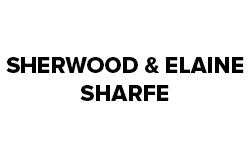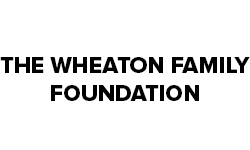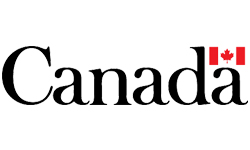Part B: Learning Plan
In this inquiry students will:
- Symbols convey information
- Some symbols require action
- Symbols create a sense of belonging
CITIZENSHIP INQUIRY
Students will use information to:
- Respond appropriately to symbols of nationalism
- Develop awareness of their thinking
- Advocate for oneself
QUESTIONS TO GUIDE INQUIRY
Essential questions are posted and discussed with students at the start of the exploration of study. These open-ended questions are continually revisited; encompass concepts that students will explore throughout the unit of study; form the evidence of understanding; and, frame the assessment at the end of the unit of study. Guiding questions are posed to support student thinking as they explore the answers to the larger overarching questions.
Teachers may want to consider putting the questions into a “Before, During, After” chart to note the changes in students’ thinking as a result of the inquiries.
Teachers may want to consider putting the questions into a “Before, During, After” chart to note the changes in students’ thinking as a result of the inquiries.
Essential Questions – Guiding Questions:
- How can symbols provide a sense of belonging and unity?
- Why are symbols so important to people? Causes? Groups? Countries?
- What are the community symbols that are important to me and why?
- What makes a symbol a symbol?
Chart student answers for reflection at the end of the inquiry.
Vocabulary
Symbol
- something that represents something else, something that stands for or represents something else, especially an object representing an abstraction
- Sign with specific meaning – a written or printed sign or character that represents something in a specific context, e.g. an operation or quantity in mathematics or music.
- Object representing something repressed in unconscious
Nation
- People in land under a single government
- People of same ethnicity
- First Nations people
Nationality
- citizenship of particular nation
- people forming nation-state
- ethnic group within larger entity
- nationhood
CONNECT TO TOPIC AND SURFACE STUDENTS’ THINKING ABOUT …
This section introduces the concepts and helps teachers gain an understanding of the current thinking of the class. Present essential questions and allow students to think about and talk about. Student answers will give teachers a baseline or beginning understanding of the amount of specific and incidental teaching required to explore these outcomes. Vocabulary is introduced and noted here. This section frames the “We do” portion of the lesson where teachers guide the initial structure of the inquiry.
Process
- Pose the essential and guiding questions and allow students to discuss their thoughts on the matter.
- Determine what the students know, understand, need to be able to do to master/answer the essential questions (connect to content). Additional guiding questions can be added as required. Students are encouraged to add their questions to the others.
- Create Know, Want to know, Learned Chart – identify vocabulary that requires development
- Surface any additional questions students might have as a result of their discussions about the essential questions.
- Post student answers for reflection at end of study.
- Introduce a number of symbols to students and see if they know the word “symbol” or can identify it as a category to which all of these things belong.
- Canada flag, Medicine Wheel, Provincial flag
- Marketing Symbols – Fast food chains, Rider flag, (Sparks, Beavers).
- Safety and/or Informational signs – Stop sign, traffic lights, (Red, yellow, green), H for hospital
- Animal tracks, changing colours of leaves, animal coats.
- Alternately present the word symbol and discuss its meaning with students and then have them generate a number of things they consider symbols.
- Using the students’ examples of symbols begin to develop categories and group symbols.
- Possible categories:
- natural symbols – rabbits changing colour, geese migrating.
- man-made symbols – safety, information, nationalism/citizenship
DEVELOPING UNDERSTANDING
This section is the core of the lesson. It describes the main activity(ies) involved. In inquiry-based learning, the teacher facilitates the activities that lead to the understandings that student make of the essential questions. It is critical then, that students be allowed to raise questions and talk about issues that develop as they explore the learning activities. This forms the “We do” “They do” section of the inquiry where students are finding answers to the overarching questions and then searching for themes and patterns as possible explanations.
- Present a variety of visual symbols and have students group symbols into categories.
- Categorize:
- Where symbols fall within the circle and outside the circle.
- Determine similarities between symbols, differences between symbols.
- Possible categories:
- Natural symbols – rabbits changing colour, geese migrating.
- Man-made symbols – safety, information, nationalism/citizenship.
- Surface reasoning as to why symbols were put into specific circle – connection to metacognitive awareness.
- Develop language around thinking i.e. “I put this inside the circle because…”
- Work with students to identify the category to which the symbols belong.
- symbols of nature, man-made symbols.
- Surface feelings, thoughts, actions that symbols create in students.
- Coordinate with senses – feel like, sound like, look like.
- Develop understanding that some symbols engender certain levels of respect that leads to behaving differently around those symbols.
- i.e. – Standing at attention when singing national anthem
- Taking metal and glasses off when an elder prays
APPLY AND EXTEND KNOWLEDGE
This section includes ideas to extend the inquiry or apply concepts explored. This section may also include additional reflective questions to promote student connection to the topic. This forms the “You do” section of the inquiry – may be “you do it collaboratively” or “you do it alone”. Invite students to extend their thinking beyond the classroom discussions and inquiry experiences. Pose additional reflective questions that have been raised to encourage critical and creative thinking.
- Begin with visual symbols and then move to auditory symbols such as jingles, songs, anthems.
- Do a walk around the school, community buildings, etc. and collect examples of symbols to add to students examples.
- Interview people in family to find out what symbols are important to them and why.
EVIDENCE OF LEARNING
This section suggests ways in which students may demonstrate their understanding. Ideal demonstrations will be in authentic performance tasks. Each citizenship study may have its own smaller assessment piece or be compiled to support one larger performance task assessment. Assessment pieces vary, but should allow students to demonstrate their understanding in a variety of ways. Demonstrations of understanding may be done collaboratively or independently.
- Begin to recognize and respond appropriately to national citizenship symbols/symbols of nationalism such as flags, Canadian, provincial flag, Métis flag, Treaty flag, FSIN flag, Medicine Wheel.
- Refer to chart of thinking at the beginning of the inquiry – Why are symbols important: to people, to groups?
- Has thinking changed? Why?
- Why is it important to know this information?
- What will they do with this new learning?
- Why are symbols important to you? Demonstrate the role symbols play in your life.
© 2024 Concentus Citizenship Education Foundation Inc. All Rights Reserved.










